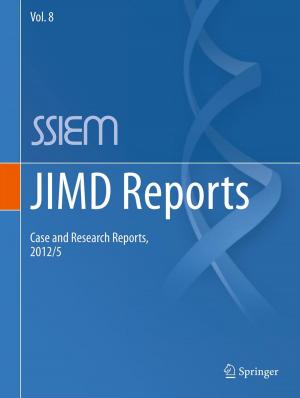Clinical Oxygen Pressure Measurement
Tissue Oxygen Pressure and Transcutaneous Oxygen Pressure
Nonfiction, Health & Well Being, Medical, Specialties, Critical Care, Anesthesiology| Author: | ISBN: | 9783642712265 | |
| Publisher: | Springer Berlin Heidelberg | Publication: | December 6, 2012 |
| Imprint: | Springer | Language: | English |
| Author: | |
| ISBN: | 9783642712265 |
| Publisher: | Springer Berlin Heidelberg |
| Publication: | December 6, 2012 |
| Imprint: | Springer |
| Language: | English |
In January 1980, the First Symposium on the Measurement of Tis sue Oxygen Pressure in Patients was held in Frankfurt. After a 4-year "rest period," the organizers of the 1984 symposium, Profes sor R. Huch of Zurich and Dr. J. Hauss of Munster, together with myself, extended another invitation to come to Frankfurt to find out what had gone on in the field of oxygen pressure measurement and its application in clinical medicine. As the following presentations will show, the application of oxygen pressure measurements has been broadened considerably. Furthermore, technological advances have been made, particularly with the increased use of computers. For various reasons, including technical ones, these methods have not been adapted as widely as one would want. Although con gresses on tissue oxygen pressure have been held in the last few years, the clinical aspect of tissue P0 measurement has not been 2 dealt with in such a concentrated and comprehensive way since 1980. It therefore seemed necessary to hold such a symposium, not only for scientific reasons, but also to enable a larger group of clini cians to gain insight into the importance of the possibilities these methods offer.
In January 1980, the First Symposium on the Measurement of Tis sue Oxygen Pressure in Patients was held in Frankfurt. After a 4-year "rest period," the organizers of the 1984 symposium, Profes sor R. Huch of Zurich and Dr. J. Hauss of Munster, together with myself, extended another invitation to come to Frankfurt to find out what had gone on in the field of oxygen pressure measurement and its application in clinical medicine. As the following presentations will show, the application of oxygen pressure measurements has been broadened considerably. Furthermore, technological advances have been made, particularly with the increased use of computers. For various reasons, including technical ones, these methods have not been adapted as widely as one would want. Although con gresses on tissue oxygen pressure have been held in the last few years, the clinical aspect of tissue P0 measurement has not been 2 dealt with in such a concentrated and comprehensive way since 1980. It therefore seemed necessary to hold such a symposium, not only for scientific reasons, but also to enable a larger group of clini cians to gain insight into the importance of the possibilities these methods offer.















